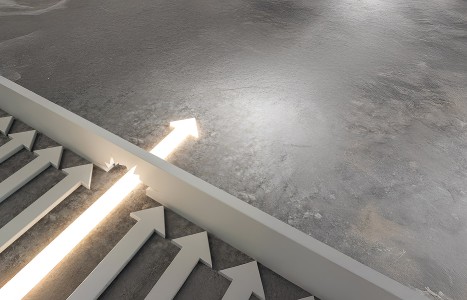You became a chiropractor to serve people, not an insurance company. You deserve to run a business that aligns with your values, supports your family and lights you up. Cash-based care isn’t just a pricing model – it’s a philosophy rooted in freedom, trust and respect for your patients and for yourself. Here's why - and how - to do it.
Pulsing in Laser Therapy, Part 1
Laser light can be emitted in several different output modes including continuous wave, modulated, superpulsed, and intense superpulsed. Therapeutic lasers being used in chiropractic clinics have power output ranging from a few milliwatts up to 12 Watts. Their wavelength (or color) is between 635 and 980 nanometers, with most using the deeper-penetrating infrared wavelengths.1 Therapeutic laser light does not penetrate clothing and must be applied transdermally.2 Appropriate dosages are shown to reduce pain3 and resolve myofascial trigger points,4 along with other beneficial effects.5
First, an explanation of terms used in this article. Power is the rate of energy delivery, and is measured in Watts. Power equals energy divided by time. Peak power is the instantaneous highest power achieved, and average power is the total energy delivered divided by the time duration of the exposure. (For more on calculations of power, energy and energy density, see "Physics for Chiropractors: Calculating the Energy Density of a Therapy Laser" in the Jan. 1, 2009 issue of DC.)
Continuous Wave

Continuous wave (CW) is like a light that is constantly "on" and is represented by graph A in Figure 1. The peak power is equal to the average power. With the higher powered Class 4 therapy lasers, continuous wave delivery above a couple of Watts will produce mild warmth in the patient's tissues. This warming does not damage tissues,6 and can help to improve blood flow and produce a soothing, pain-relieving sensation.
Modulated
Therapeutic laser light can also be modulated, or flashed on and off many times per second. The mechanism of how the laser light is modulated inside the laser unit is a topic for another article. Here we are focusing on what the tissue "sees." Whether the light is turned on and off by flipping a switch or by passing a shutter in its path, the outcome is the same: laser light that is flashing.
Most modulated lasers produce light that is "on" half the time and "off" half the time. These are represented by graphs B and C in Figure 1. Frequency is the measure of how many times per second the light flashes and is measured in Hertz (Hz). Therapeutic lasers can produce modulated light from 1 to 20,000 Hz. There is evidence that modulated laser light has different effects on tissues.7
Duty cycle is the fraction of time that the laser is in its active state. In graphs B and C above, the duty cycle is simply 50 percent, because the light is "on" half the time and "off" half the time. An advanced definition of duty cycle is the duration of the pulse divided by the period, or the time from the beginning of one pulse to the beginning of the next. The laser represented by graph D has a duty cycle of 25 percent; it is "on" one-fourth of the time and "off" three-fourths of the time. Duty cycle can be used to relate peak power and average power by the equation:
Average power = Peak power x duty cycle
Most modulated therapy lasers produce a 50 percent duty cycle and use GalliumAluminumArsenide (GaAlAs) diodes, which are capable of delivering high average power in either a continuous or modulated format.
Superpulsed / Intense Superpulsed

Another type of therapy laser uses a GalliumArsenide (GaAs) diode, which is not capable of delivering high average power due to immense heat generated in the diode. GaAs therapy lasers do not produce continuous wave or modulated output, but they can deliver superpulsed output. In superpulsed mode, the peak power is very high, up to 250 Watts.7 The pulse duration is very short, on the order of a few nanoseconds; thus the duty cycle is very low.
Graph A in Figure 2 represents a superpulsed GaAs laser. It is difficult to graphically demonstrate this type of laser because the short pulse duration dictates a very narrow line. Pulse durations for GaAs lasers are measured in nanoseconds. To make an analogy: 200 nanoseconds is to one second as one second is to 57 days. The duty cycle of a GaAs laser is usually less than 1 percent.

Graph B in Figure 2 represents an output mode called "intense superpulse." A GaAlAs diode is used to produce a peak power less than 20 Watts with a duty cycle around 40 percent.
Recall that average power equals duty cycle times peak power. Figure 3 compares the average power for modulated, superpulsed and intense superpulsed lasers. The dashed line represents the average power output for each. Rather than risk reader drowsiness by delving into specific calculations, interested readers are encouraged to contact me for more information.
Editor's note: Part 2 of this article, scheduled to appear in the Jan. 15 issue, discusses the possible physiological effects of pulsing.
References
- Byrnes K, et al. Light promotes regeneration and functional recovery and alters the immune response after spinal cord injury. Lasers in Surgery and Medicine, 2005,36:171-185.
- Video demonstration at www.youtube.com/watch?v=ZgbI1i-eNKA. Find by searching "laser through clothing" at YouTube.com.
- Chow R, Johnson M, Lopes-Martins R, Bjordal J. Efficacy of low-level laser therapy in the management of neck pain: a systematic review and meta-analysis of randomized placebo or active-treatment controlled trials. Lancet, 2009;374:1897-908.
- Vernon H, Schneider M. Chiropractic Management of Myofascial Trigger Points and Myofascial Pain Syndrome: A Systemic Review of the Literature. Council on Chiropractic Guidelines and Practice Parameters, 2009, National University of Health Sciences.
- Chow, et al., Op cit.
- Harrington P. "Physics for Chiropractors, Part 3: Can Laser Therapy Damage Tissue?" Dynamic Chiropractic, Jan. 1, 2010.
- Hashmi J, et al. Effect of pulsing in low-level light therapy. Lasers in Surgery and Medicine, 2010;42:450-466.
This is a continuing series by Dr. Harrington discussing laser therapy from a physics perspective. To access previous articles, search DynamicChiropractic.com (enter "Harrington" or "Physics for Chiropractors" as search terms).



